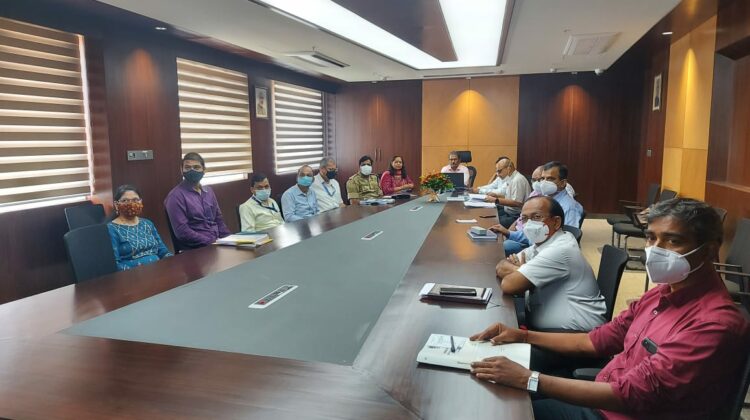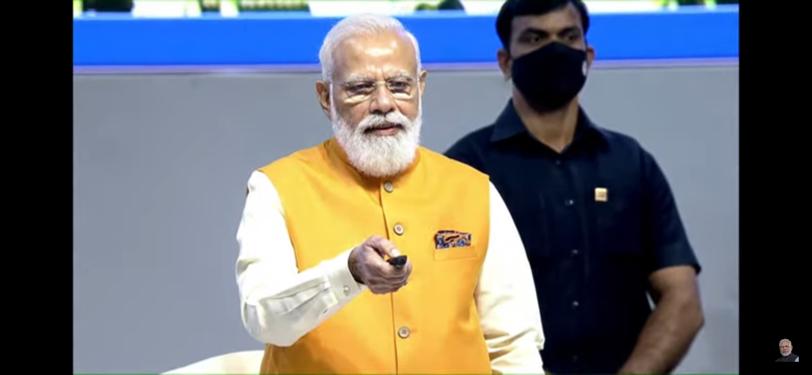
JNPT’s multimodal connectivity in accordance with objectives of Gati Shakti

MUMBAI : The PM Gati Shakti National Master Plan for Multimodal Infrastructure Connectivity to Economic Zone aims to enable efficient connectivity for the flow of products and people while also improving the comfort of living and doing business. The plan aims to boost Indian infrastructure and multi-modal connectivity over the next 25 years and reduce logistics costs for improved global competitiveness. The project will kick off a virtuous cycle of investments, large employment opportunities, aggregate demand, and thus economic growth.
Multimodal connectivity results in high environmental sustainability, with the development of new modal and intermodal infrastructure and hinterlands which have gained access to the global market. Compelling multimodal transportation at JNPT not only provides manufacturers faster access to domestic and international markets but also has a multiplier effect on the economy too. It will ensure that infrastructure investments flowing into the country are better utilised by the economic hubs, and open the doors for new future economic zones. Multimodal transport system at the port has integrated different geographical scales from global to local by creating a transportation system composed of gateways and hubs where regional and local transportation networks converge. JNPT has created a vibrant and efficient multimodal system integrating roads, rail, sea, inland waterways, air and warehousing facilities.
The port has formulated a strategic model to conceptualize multimodal maritime connectivity at the regional and global levels. With an extensive network of road, rail, inland shipping and container services JNPT are well connected with the rest of the country. The port’s maritime and intermodal solutions create better transportation, ensure manufacturing hubs gets the easy and shortest route to take their goods for exports.
By providing a coastal berth at JNPT, the port handles about 2.5 million tonnes of coastal cargo, including coastal liquid cargo. The construction of the dedicated berth is in tune with the government’s policy to promote coastal shipping to shift freight from road to an environment-friendly and cost-effective mode of transport. It also meets a constant demand from the shipping and trade fraternity. Coastal berths provide an impetus for coastal cargo movement and enhance coastal shipping of goods and passengers. Better infrastructure for coastal shipping decongests rail and road networks besides ensuring cost-competitive and effective multi-modal transportation solutions.
With Gati Shakti, the country will get an integrated, harmonised transportation and logistics grid as logistics and supply chain costs account for 12% to 13% of the Gross Domestic Product (GDP), compared to the global average of 8%. Equally true with the road network at JNPT, linking the port with the hinterland road network are NH4B, NH4, NH17, NH 3 & 8 and State Highway 54. These roads are an important link between the northern and southern parts of India and JNPT.
To enhance the rail connectivity and enable faster movement of cargo to benefits the EXIM community, JNPT is linked with the Indian Railways through a lead line connecting the port with its serving station at Jasai. The rail system at the port is operated and maintained by the Indian Railways, has 8 full-length railway lines serving the three existing container terminals. The functioning of Dwarf Containers train services at JNPT is a pivotal step towards streamlining the rail movement of EXIM cargo via double-stacked dwarf containers giving the EXIM community a competitive cost advantage by lowering hinterland logistical costs, while simultaneously enhancing rail-cargo traffic at the port.
Multimodal connectivity integrates the supply chains of the region further enhancing trade connectivity and benefits not only the business community but also the people of the sub-region. It has positive impacts on employment, domestic demand mobilisation, and improvises the macroeconomic situation of the country. Efficient and adequate systems of transportation, logistics, and trade-related infrastructure can assist a country’s ability to compete on a global scale.
Gati Shakti will lend more power and speed to the Infrastructure Pipeline by sharing resources and developing synergies towards building a more harmonised ecosystem. It will ensure last-mile connectivity to economic zones in a definite timeframe by ultimately improving India’s productive capacity and global competitiveness in manufacturing in India. JNPT’s multimodal connectivity contributes immensely along the lines of PM Gati Shakti National Master Plan for Multimodal Infrastructure Connectivity to Economic Zone. The extended gateways globally and locally are seamlessly connected to the port by rail, road, air, etc. enhancing, maximum and flexible access to the hinterland, creating flexibility and efficiencies among businesses, connecting the movement of people, goods and services.
Attributed to: Shri Sanjay Sethi, IAS, Chairman, JNPT



